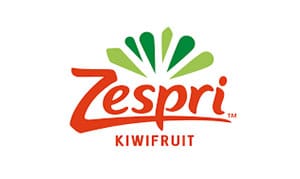The Importance of Mango Quality Control & Testing
The mango is a tropical delight with more than 500 varieties around the globe. Safeguarding the mango fruit’s distinctive freshness, taste, and overall quality requires careful quality control from cultivation to consumers’ tables.
Quality control for mangoes has gained paramount importance as stakeholders ranging from cultivators and harvesters to wholesalers, marketers, and retailers aim to minimize waste and maximize revenue in the fresh produce industry. Implementing systematic mango quality control measures and processes during the mango season ensures that buyers receive produce that meets their standards.
This is all the more necessary because fresh mangoes have a relatively short shelf life and tend to bruise easily if not handled properly.
Common Mango Defects in Quality Management
Common Pests
Various pests affect mangoes. Fruit flies lay eggs in developing fruit, which feed on the mango pulp. Hoppers suck sap from young leaves and flowers, making them drop prematurely, while stem borers can undermine the stem, branches and twigs of the tree.
Mango Mealybugs
Mango mealybugs feed on plant sap and excrete a sticky substance called honeydew that leads to sooty mold growth on the fruit.
Mango Malformation Disease (MMD)
This is a disorder in mango trees leading to abnormal growth and decreased fruit yield. Often associated with the Fusarium fungus, MMD results in deformed, dwarfed structures, severely impacting the tree's productivity and health.
Powdery Mildew
This disease appears as a white powdery substance on the leaves and flowers, caused by the fungus Oidium mangiferae. It impedes the process of photosynthesis by covering leaf surfaces, thereby stunting growth and leading to premature leaf fall.
Bacterial Black Spot
Bacterial Black Spot affects mangoes by producing distinct dark spots on the surface. These spots, often raised and rough, not only mar the appearance but also compromise the quality and market value of the mango.
Mango Scab
Caused by Elsinoë mangiferae, this disorder impacts mango quality, creating rough brown spots on fresh fruit. Various mango varieties are susceptible to mango scab.
Mango Black & Brown Spots
Skin blemishes and discoloration can either be the result of a disease, or rough handling in harvesting, packaging and transit. In either case, the fruit may fall short of desired quality standards.
Internal Color and Firmness
The internal color and firmness of a mango are vital quality parameters. Variations in these attributes can affect the mango's ripeness and maturity, leading to a lack of consistency in taste and texture.
Spongy Tissue
This is a common defect in certain mango varieties, particularly in Alphonso mangoes. It can drastically reduce mango quality, resulting in internal, inedible sections within the fresh fruit. Spongy tissue often goes undetected during quality control inspections.
Internal Necrosis
Internal Necrosis manifests as discolored, inedible sections within the mango without altering its external appearance. This condition is subtle and might be unnoticed until the fruit is cut open, presenting challenges for quality assurance.
Interesting Facts About Mangoes
- India is the largest producer of mangoes in the world, contributing to approximately half of the global production. Other major mango-producing countries include China, Thailand, and Indonesia.
- Mango trees are long-living plants that can survive for hundreds of years. Some trees continue to bear fruit even after 300 years. The trees can grow quite tall, with some reaching up to 100 feet in height. The extensive root system of a mango tree can spread out over 20 feet underground to support the structure above.
- Originating in South Asia, mangoes have a long history that dates back over 4,000 years. They hold significant cultural and symbolic meanings in various parts of the world, particularly India.
- Mangoes are related to cashews, as both belong to the Anacardiaceae family. The Anacardiaceae family includes a variety of flowering plants, many of which produce edible fruits or nuts.
- Mangoes are rich in vitamins A, C, and E, and also contain fiber, antioxidants, and a small amount of protein. They’re linked to various health benefits, including improved immunity, digestion, and eye health.
Quality Evaluation Attributes for Mangos
Internal Color
Firmness
Size and shape
Brix degree (sugar content)
Skin appearance (checking for defects like black spots or brown spots)
Clarifruit’s fresh produce software simplifies quality testing for a wide range of quality parameters relevant to mangoes, helping producers ensure their crop meets the desired standard.
Download our free app for the complete list.
Our quality control app also integrates with other technology for comprehensive quality management of mangoes and other fresh produce. Learn more here.














